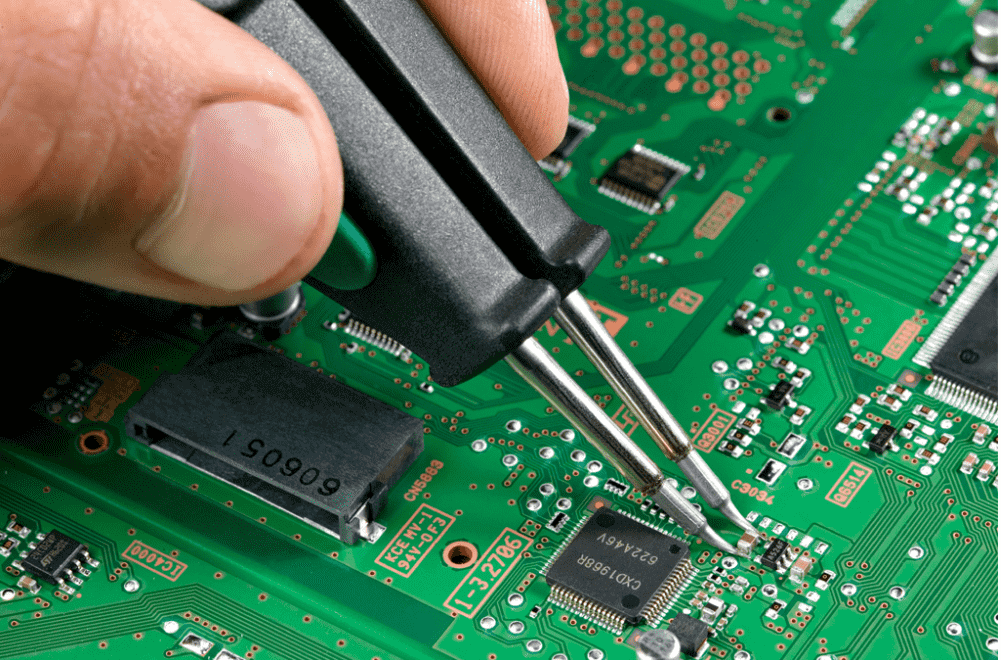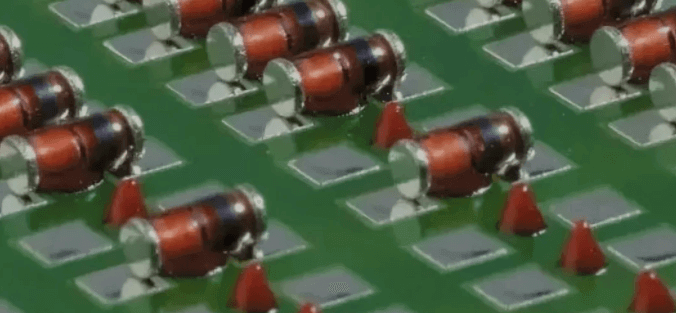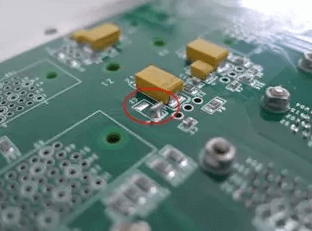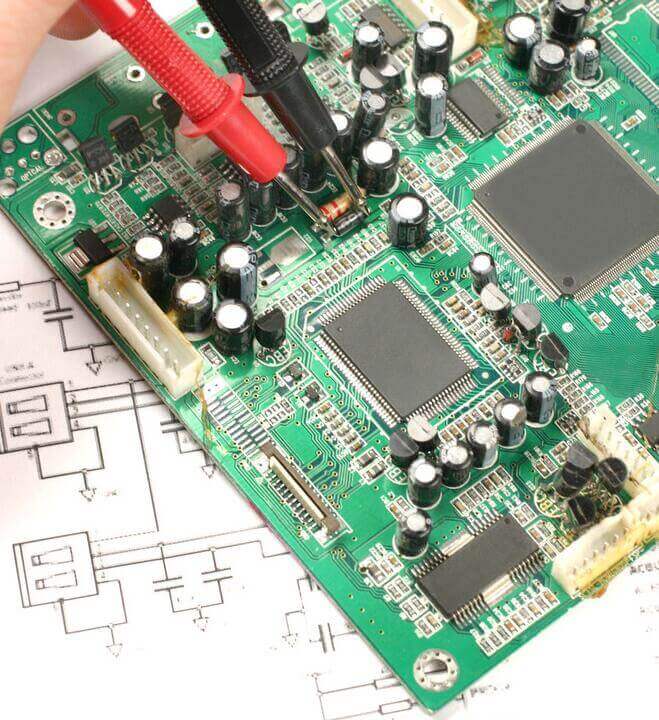Identifying
electronic components on a circuit board is crucial for anyone working with electronics, whether for manufacturing, design, or repair purposes. This guide will walk you through the methods and steps to accurately identify various components on a circuit board.
Electronics Components Identification Method of Circuit Board
1. Resistors - circuit board identification
In the circuit, "R" plus numbers are used to represent resistors, such as R1 represents a resistor numbered 1. The main functions of resistors in circuits are: current shunting, current limiting, voltage division, biasing, etc. Parameter circuit board identification: The unit of resistance is ohm (Q2), and the multiplication unit is: kilohm (KQ), megohm (MQ2), etc.

2. Capacitors - printed circuit board parts identification
In the circuit, "C" plus numbers (for example, C13 represents a capacitor numbered 13) are generally used to represent capacitors. Capacitors are composed of two pieces of metal films close together, separated by insulating materials in the middle. The main characteristic of capacitors is to block direct current and pass alternating current. The size of the capacitor capacity is the size of the electrical energy that can be stored. The blocking effect of the capacitor on the AC signal is called the capacitive reactance, which is related to the frequency and capacitance of the AC signal.
The identification method of circuit board capacitance is basically the same as that of resistance, which is divided into three types: direct marking method, color marking method and digital marking method.

3. Inductance
In the circuit, "L" plus numbers are usually used to represent inductance. For example, L6 represents the inductor numbered 6. An inductor coil is made by winding an insulated wire around an insulating frame for a certain number of turns. DC can pass through the coil, and the DC resistance is the resistance of the wire itself, and the voltage drop is very small; when an AC signal passes through the coil, self-induced electromotive force will automatically be generated at both ends of the coil. The direction of the self-induced electromotive force is opposite to the direction of the applied voltage, which hinders the passage of AC, so the characteristics of the inductor are to pass DC and block AC. The higher the frequency, the greater the coil impedance. Inductors and capacitors can form an oscillation circuit in the circuit.
Inductors generally have direct calibration methods and color calibration methods, and the color calibration method is similar to resistors. For example, brown, black, gold, and gold represent an inductance of 1uH (error 5%). The basic unit of inductance is: Henry (H) The conversion unit is: 1H=103mH=106uH.
The circuit board component identification usually uses "D" plus the number in the circuit to represent the crystal diode. For example, D5 represents diode No. 5. The main characteristic of a diode is unidirectional conduction, that is, under the action of a forward voltage, the on-resistance is very small; under the action of a reverse voltage, the on-resistance is extremely large or infinite. Due to the above characteristics, diodes are often used in rectification, isolation, voltage regulation, polarity protection, PCB identification code control, frequency modulation, noise suppression, and other circuits in cordless phones.
The identification of the circuit board components of a diode is very simple. Low-power diodes are mostly marked with a color ring on the outside of the diode to mark the N pole (cathode). Some diodes also use special symbols of diodes to indicate the P pole (positive pole) or N pole (negative pole). There are also symbols marked as "P" and "N" to determine the polarity of the diode. The positive and negative poles of the light-emitting diode can be identified by the length of the pins, the long pin is the positive pole, and the short pin is the negative pole.

Circuit board parts identification usually uses "Q" plus the number in the circuit to indicate the transistor, such as Q17 represents the number of 17 transistors. The transistor contains two PN junctions inside and is a special device with amplification ability. It is divided into NPN type and PNP type. These two types of transistors can complement each other in working characteristics. The so-called transistor pair in the OTL circuit refers to the pairing of the PNP type and NPN type.

Identify circuit board components often use "ZD" plus numbers in the circuit to indicate Zener diodes. For example: ZD5 represents the voltage regulator tube numbered 5. The voltage regulation principle of the voltage regulator diode: The characteristic of the voltage regulator diode is that the voltage at both ends remains basically unchanged after the voltage regulator diode breaks down. No need to find it. In this way, when the voltage regulator is connected to the circuit, if the voltage at each point in the circuit fluctuates due to power supply voltage fluctuations or other reasons, the voltage across the load remains basically unchanged.
Fault characteristics: The faults of the voltage regulator diode are mainly manifested as open circuits, short circuits, and unstable voltage regulation values. Among these three types of faults, the former type of fault is manifested as an increase in the power supply voltage; the latter two types of faults are manifested as the power supply voltage drops to zero volts or the output is unstable.
7. Varactor diode
The varactor diode is a special diode specially designed based on the principle that the junction capacitance of the "PN junction" inside an ordinary diode changes with the change of the external reverse voltage. The varactor diode is mainly used in the high-frequency modulation circuit of the landline in a mobile phone or cordless phone to realize the modulation of low-frequency signals into high-frequency signals and transmission.
In the working state, the modulation voltage of the varactor diode is generally applied to the negative electrode, so that the internal junction capacitance of the varactor diode changes with the change of the modulation voltage.
How to identify circuit board components
Step 1 PCB component identification:
First, identify the printed circuit board. Usually, this is a basic rectangular chip or circuit board, usually green or blue.
Step 2 Circuit board parts identification:
Identify other types of circuit board components. Usually these components control and regulate the current of the entire power board. Including resistors: color-coded tubes to reduce current. Capacitors and potentiometers: usually rectangular or round, and use ohm variable resistors to measure the markings. Oscillators: when the cylinder or box is marked with "X" or "Y". Electrical boxes (marked with the letter "K") and transformers (marked with "T"). And other electronic components, such as passive components (with two forked wires) and sensors (spiral pieces).
Step 3 Circuit board component identification:
Find the battery, fuse, diode, and transistor on the circuit board. The battery is a small tube that resembles the appearance of a small household battery. Similarly, the fuse may be similar to the fuse in your home. The diode is connected to the wire (usually marked with "D") and looks like a transparent or translucent tube. The transistor is a small component and a thin metal connection.
Step 4 Identify circuit board parts:
Find the processor. They are usually small squares or rectangles on a computer circuit board. In some cases, the central processing unit (CPU) may be labeled with the company name. Also, sometimes a small electric fan can be placed under the processor to prevent overheating.
Step 5 Identify Circuit Board Parts:
Find the motherboard circuit board. Designers may sometimes connect small circuit boards (especially motherboards) to other locations, such as rectangular slots. Therefore, the connector wires will be long, especially the connection between boards.
Step 6 Identify Circuit Board Parts:
Find other chips on the board. These smaller chips are usually printed on the silicon board below other components.
Step 7 Identify Circuit Board Parts:
Find the RAM (random access memory) connected to the circuit board. A circuit board may look like a small gray box, and the auxiliary RAM is a long, thin rectangular chip.







